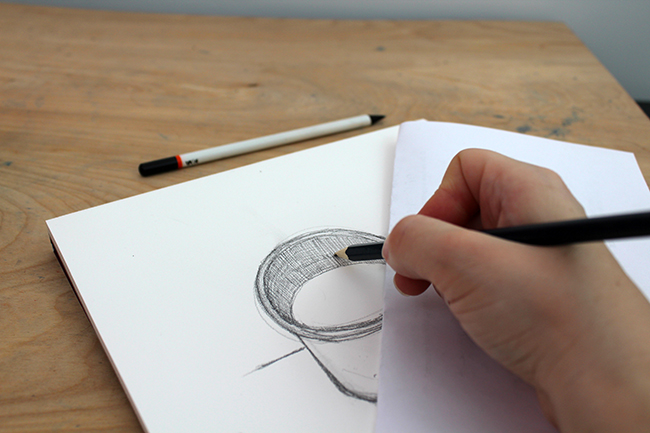Estimated Fees in India
₹ 400 to ₹ 500 per hour
Find Design Entrance Exam Coaching Fees in your locality
Post your Learning Need
Get customized quotes and responses from Tutors
Choose & Learn from Tutor of your choice

₹ 400 to ₹ 500

₹ 400 to ₹ 500

₹ 400 to ₹ 500

₹ 400 to ₹ 500

₹ 400 to ₹ 500

₹ 400 to ₹ 500
Lesson Posted on 23/06/2021 Learn Art and Creativity
Pastel Painting Techniques for Beginners - Srishti Das

Srishti Das
# Whatsapp me or Call me on the same number more details or for booking demo classes. # Customised...
One of the benefits of working with pastel is that there are various ways to work with the medium. It is very expressive and can stand on its own, but it also works well with other mediums. Experiment with pastel on top of a picture, over an underpainting of watercolour, or charcoal, pencil or oil.
Blending: Try rubbing gently instead of dabbing over an area to soften too much detail.
Apply the Technique-
Blend for still water, particularly when developing reflections; sky at the horizon; corners and foreground of paintings to decrease detail. It’s also useful for areas where you wish your painting to be peaceful and quiet.
Working On Point: Hold the pastel-like pencil and work on the tip, formulating thin lines.
Apply the Technique:
Use for crosshatching or finished detail artwork such as tree branches, hair detailing to sharpen architectural forms, and final tones requiring a controlled hand.
On the Side:
Thicker strokes are made by holding the pastel on its side. Good for blocking in your drawing in the first steps.
Apply the Technique:
Build up areas where you wish the broad strokes to demonstrate information without getting into critical detail, such as painting foliage or clouds or bushes.
Hatching and Crosshatching:
Crosshatching is when strokes are positioned uniformly at angles to each other or use random hatching, where the marks are not so identical.
Apply the Technique-
Build up colour and form you don’t want to blend. This technique is also good for working on surfaces with a distinct pattern or a rough tooth you wish to downplay.
Layering:
Layer these wide strokes over each other with a light hand, so the colour underside is still visible and not blended.
Apply the Technique:
Use for moving clouds or choppy water. This is so effective it can be used to create an entire painting.
read lessLesson Posted on 20/06/2021 Learn Art and Creativity

Srishti Das
# Whatsapp me or Call me on the same number more details or for booking demo classes. # Customised...
When you’re beginning to draw , picking up a pencil is generally the first thing you do. But, that’s where many of us stop; we learn how to doodle, but don’t go beyond the basics. If you’re unfamiliar with drawing with a pencil—beyond stick figures or scribbles—there are sketch techniques that you need to know. I’ll go over nine of them that’ll get you well on your way to more advanced drawing.
1.Choosing the right materials
Graphite comes in a variety of scales. Did you ever notice that your standard pencil says HB? That’s not arbitrary — it refers to the density of the lead. A pencil that says “H” is going to be harder and will therefore make lighter, crisper lines. Alternatively, a “B” indicates that the graphite is soft, and it’s perfect for drawing deep, rich darks. So, HB is right in the middle. I like it for sketching.
For sketching, it’s important to have a range of pencils. Try getting one from each family, including HB.
Like graphite, your paper choices are seemingly endless. It can vary in tone (looking “warm” or “cool”) and texture — with a smooth finish or “toothiness.” When trying to select sketching paper, look for something that is optimized for graphite. I enjoy the Legion brand and found their stonhenge light paper to be great for it.
I picked a coffee mug to try out my favorite sketch techniques. It’s relatively easy to draw because it can be easily broken down into basic shapes. Try the same thing — pick something and study it for a couple of minutes. Ask yourself: What are the defining shapes? Where do they overlap? With the coffee mug, a circle makes up the lip of the cup, and an oval makes up the body. Overlap the lines/areas in which the shapes meet.
While I was drawing the handle of my coffee mug, I noticed that it was foreshortened, meaning that part of it is facing closer to me and looks distorted. To get the angle of the handle correct, I used this trick: Hold your pencil and line it up to the angle that you’re trying to replicate. Then, bring your pencil directly to the paper, without moving it. That will ensure you have the right (pun intended) angle!
Hatching is one of the most basic drawing techniques. To create volume and shading, draw lines that follow the curve of a line. These lines do not touch. Cross hatching is layered hatching, where the lines intersect. The distance between the lines and intersections will determine how dark an area is.
Unlike hatching and cross hatching, the tonal approach has no visible lines. To do this, sweep your pencil back and forth across the page in a fluid motion. With this technique, pressure and graphite scale is important. The harder you press, the darker the tone will appear.
Build on the tonal technique with blending. Simply use your finger or blending stick to create a smooth, even surface. (Wash your hands afterward!)
Accent lines don’t necessarily build form, but they add style to your drawing. Wood grain, for instance, is a great example of decorative accent lines you can incorporate.
Highlights are a great way to define and build form. Bright, crisp shapes will make something look extra shiny, but this can get muddled the way more you draw. Once you’re done drawing, use a clean eraser to bring the white of the paper bag. Use this technique sparingly, however—you don’t want your drawing to look fake!

It seems counter intuitive, but this really works. To avoid smudging your artwork as you draw, place of piece of paper on top of your drawing. Rest your hand on it while you sketch.
It seems counter intuitive, but this really works. To avoid smudging your artwork as you draw, place of piece of paper on top of your drawing. Rest your hand on it while you sketch.

Lesson Posted on 20/07/2017 Learn Exam Coaching/ACCA Exam Coaching
3 Steps To Become A Wrecking Ball On Your Own Terror Barrier

Laavanya Kumar Shrivastava
I have been into healing and coaching for last 8 years. I have a very well defined way to teach but also...
3 steps to becoming a wrecking ball on your own Terror Barrier:
1. Do it scared. Just keep marching, no matter how badly your feet want to stay rooted to the ground. Refuse to permit this negative demon to control you, your emotions and your future.
2. Expect the enemy. Remember the Terror Barrier rears its ugly head every time we attempt to make a major move in life into an area we have never travelled before. It’s as natural as day and night. Where before you used to let it stop you cold, now you can simply shrug and tell yourself, “Oh, there it is again. Well! This must really mean something great to me!”
3. Keep your eyes on the prize. Eleanor Roosevelt said, “You gain strength, courage and confidence by every experience in which you really stop to look fear in the face. You must do the thing you think you cannot do.” That is excellent advice. You may not know exactly what lies on the other side of your Terror Barrier, but there’s no question that once you get there, you’ll be that much closer to your goal.
If your goal doesn’t scare and excite you at the same time, you’re going after the wrong goal. Begin to visualise yourself successfully wrecking that Terror Barrier of yours. Mentally see yourself winning, and you will liberate yourself from the crippling emotional state that the Terror Barrier causes. Remember, perception is the reality!
Have a question about Design Entrance Exam Coaching Fees? Ask your question and get answers from top Tutors.
Create your FREE UrbanPro profile and grow your income!
Find best tutors for Design Entrance Exam Coaching Classes by posting a requirement.

Get started now, by booking a Free Demo Class